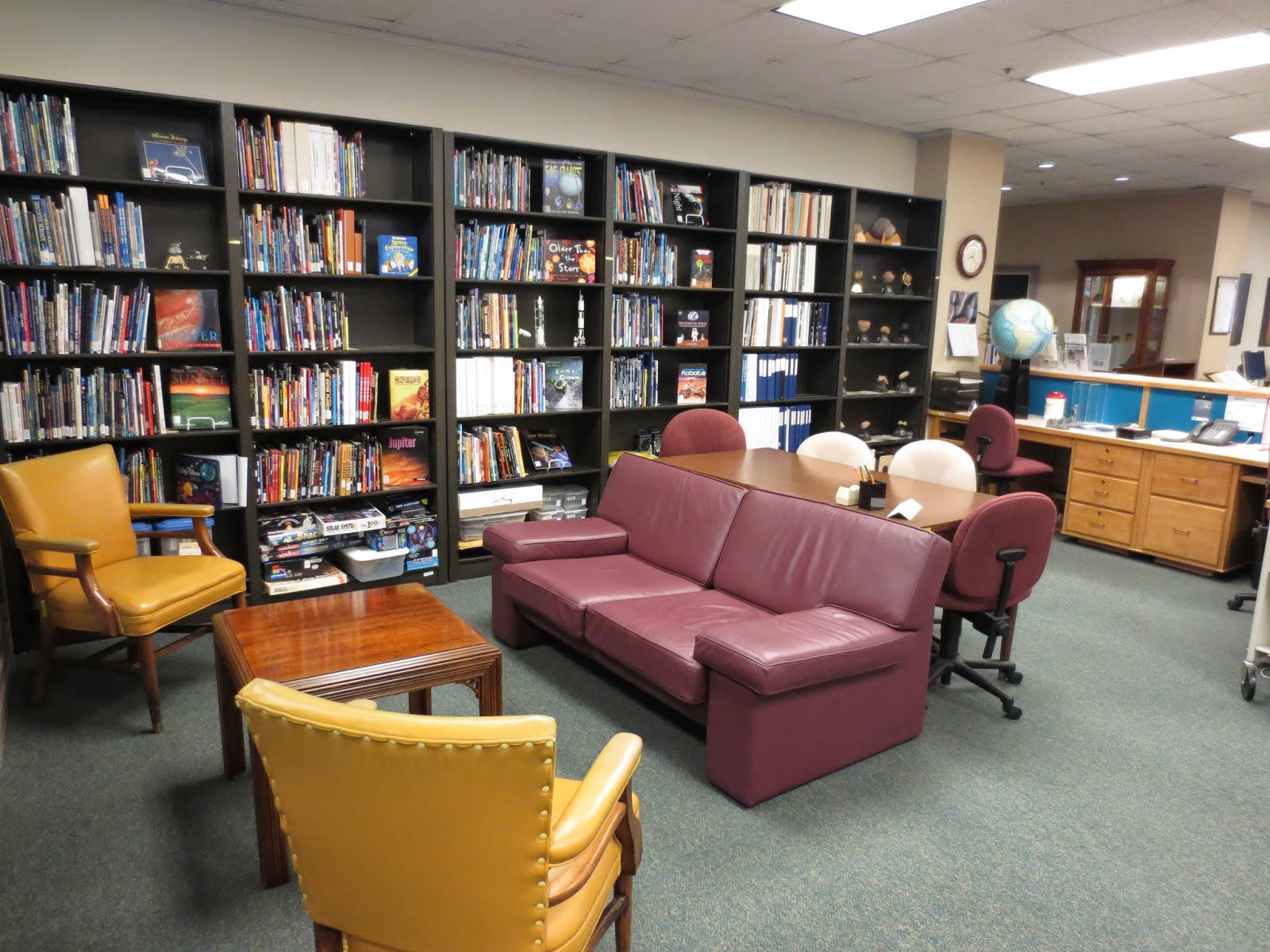This is exciting.
I mean really exciting.
It's the JOHNSON SPACE CENTER!
ERMAGERD! JERHRNSERN SPERCE CERNTER!
*Ahem*
So, a lovely lady from the Universities Space Research Association drove me and a few others to the center for our tour. Since we didn't have our badges yet, we needed her to get us on to the site and help us through the badge process. Timothy (a gent from Leeds! Remember that place?) and I were given special badges as "Foreign Nationals", indicating that we require an escort with us at all times on the premises, lest I be arrested for being Canadian. This was the third time that my fingerprints have been taken over the course of this trip. I'm not sure why this was necessary, given that on my extremely long visa application I
clearly indicated that I'm not a spy. ("Are you coming to the United States for the purposes of espionage Y/N?" along with other classics such as, "Are you involved with human trafficking Y/N?" and "Have you ever funded terrorist activities Y/N?")
 |
| I'm glamorous |
After going through the security clearances, we were able to get back in the vehicle and drive to the building of our tour. The NASA grounds are highly expansive- you pretty much need a vehicle to drive between buildings.
We waited in the lobby for our guides to arrive. One of the USRA ladies took pictures of us posing next to a life-sized signed cutout of Buzz Aldrin on the moon. (I will post this as soon as I can.)
Our tour consisted of two parts: The Lunar Tour and the Stardust Lab.
The Lunar Tour was first. We learned that samples from space are often kept in pristine condition by reducing the amount of potential interaction with other substances. We were required to dress up in bunny suits to keep dust and air born particles at a minimum in the facility. We even waited in a small chamber for the air to purify before being admitted to the Lunar room. The curator lady informed us that we were in a "Class 1000" room, meaning that there were <1000 particles per cubic meter of air. For scale, average air is on the order of ~1,000,000 particles per cubic meter.
And we saw moon rocks! Rocks! From the moon! The moon!
Among specimens, we saw a volcanic breccia, vesicular basalts and rocks that had been partially flash melted from meteor impact. The left rock on the upper photo shows some interesting impact pits. Our guide informed us that these features can be used as "proof" that the rocks did indeed come from the moon, because they are not found anywhere on Earth, and have not been able to be replicated in a lab.
We also saw the
Genesis Rock, which is dated at 4.2 billion years old, making it older than oldest known crustal rock on earth, the Acasta Gneiss, at 4.02 billion. In Historical Geology class in 2011, I held a piece of the Acasta Gneiss and thought to myself, "This is the oldest rock I will ever see,". There is something very special about being proven wrong, and experiencing things that continuously push the limits of what I thought possible.
The Stardust lab is where the
analysis of space particles takes place. We weren't able to go into this lab, (which is Class 10!) but we were able to look in through a window, and see some samples of the
aerogel used to capture the particles. I remember images of the aerogel was going around Facebook awhile back, so I was thrilled to see it in person.





































